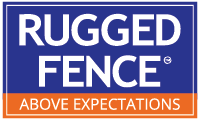Fence Purposes
How Different Fence Types Are Used
Privacy
A privacy fence is a type of fencing designed primarily to provide seclusion and block the view of the enclosed area from outsiders. It typically features solid panels or closely spaced vertical boards without gaps. Common materials for privacy fences include wood, vinyl, or composite materials. They come in various styles and heights to cater to different preferences and needs. Privacy fences offer solitude, security, and noise reduction. They are often used in residential settings to create intimate outdoor spaces, keep prying eyes at bay, and enhance property boundaries. Additionally, they serve as a backdrop for landscaping and outdoor living.
Pets
A pet fence is a specialized type of fencing designed to keep pets within a designated area while protecting them from potential dangers. Physical Pet Fences include traditional fences like wooden, chain-link, or vinyl fences that enclose an area to prevent pets from escaping. They offer both security and visibility. Some physical pet fences also feature additional pet-friendly features, such as small gaps or windows for dogs to see through. Pet fences are popular for ensuring pets’ safety, preventing them from straying into traffic or other hazards while allowing them to enjoy outdoor spaces. They provide peace of mind for pet owners and maintain a pet’s freedom to roam within established limits.
Wildlife
A wildlife fence is a specialized barrier designed to protect wildlife and mitigate human-wildlife conflicts. These fences serve several crucial purposes, they help protect crops and can be a safety measure as well. These fences are designed with specific features like height, material, and mesh size to suit their intended purpose, whether it’s keeping large mammals away from highways or safeguarding vulnerable ecosystems. Wildlife fences play a crucial role in protecting both human interests and biodiversity.
Security
A security fence is a robust and fortified barrier designed to deter unauthorized access and enhance safety. It can serve various purposes, from protection of your property, privacy, safety, or access control. Materials for security fences vary, including chain-link, barbed wire, steel, or concrete, and often incorporate additional features like electronic surveillance, sensors, and anti-climb mechanisms. Security fences are essential for safeguarding critical infrastructure, maintaining privacy, and enhancing overall safety and security.
Pools
Pool fences are not only nice way to finish the look of your backyard, but there are a several other key factors that you need to think about when adding a fence around your pool.
- Child Safety – The primary purpose is to prevent unsupervised access to the pool, reducing the risk of drowning accidents, especially among young children who may not be able to swim.
- Legal Compliance – In many jurisdictions, pool owners are legally required to install a pool fence to meet safety regulations and avoid potential liability in case of accidents.
- Liability Protection – A pool fence helps protect pool owners from potential lawsuits arising from accidents that occur on their property.
- Pet Safety – It also safeguards pets from falling into the pool, reducing the risk of injuries or drowning.
- Privacy – A pool fence provides privacy for poolside activities, ensuring that you can enjoy your pool area without unwanted onlookers.
- Security – It can deter unauthorized access, preventing trespassers or intruders from using your pool without permission.
Vineyards
A vineyard fence is a specialized enclosure designed to protect and manage vineyards, where grapes are cultivated for winemaking. These fences serve multiple purposes:
- Crop Protection – Vineyard fences keep out wildlife, such as deer and birds, that might otherwise damage or consume grapevines and their fruit.
- Pest Control – They help control the spread of pests and diseases, reducing the need for chemical interventions.
- Boundary Definition – Vineyard fences demarcate the vineyard’s boundaries and protect it from encroachment.
- Support for Vines – Some vineyard fences are designed to support trellised grapevines, aiding in their growth and maintenance.
Materials used for vineyard fences vary, with options like wood, wire, and vinyl. The choice depends on factors like aesthetics, durability, and the specific needs of the vineyard. These fences are crucial for preserving grape quality and the overall success of wine production.
Gardens
A garden fence is a necessity for any outdoor space, serving a multitude of crucial functions. Firstly, it provides essential protection for your cherished plants and crops by keeping out foraging wildlife and preventing them from becoming a buffet. It also acts as a security barrier, discouraging trespassers and safeguarding your property. Beyond functionality, a well-designed garden fence contributes to privacy, creating a serene oasis for relaxation and outdoor activities. It defines property boundaries, reducing potential disputes with neighbors, and can even enhance the aesthetic appeal of your garden, adding character and charm to your landscape. In addition, garden fences play a vital role in child and pet safety, ensuring that your loved ones remain within the confines of a safe and supervised area. Overall, a garden fence is a fundamental component of a functional, secure, and inviting outdoor space.
Livestock
A livestock fence is a critical component of agricultural and rural settings, primarily designed to fulfill two essential purposes: containment and protection. It serves as a secure enclosure to confine livestock, such as cattle, horses, sheep, and goats, preventing them from wandering onto roads or neighboring properties. Additionally, livestock fences safeguard these animals from potential dangers like predators and traffic, ensuring their safety and well-being. These fences are constructed from various materials, including wood, wire, or metal, and are tailored to the specific needs of the livestock being raised. In essence, a livestock fence is indispensable for effective livestock management, promoting safety, security, and the efficient operation of farms and ranches.
Decorative
A decorative fence serves primarily as an aesthetic enhancement for your outdoor spaces. Unlike functional fences designed for security or privacy, its primary purpose is to add visual appeal and charm to a property. Decorative fences come in a wide variety of styles, materials, and designs, from ornate wrought iron to intricate lattice patterns and wooden picket fences. They can define garden borders, create focal points, or complement landscaping features. While decorative fences may not offer the same level of security or privacy as other types, they play a crucial role in enhancing curb appeal, contributing to the overall beauty and ambiance of a home or garden, making them a valuable addition to any landscape.


